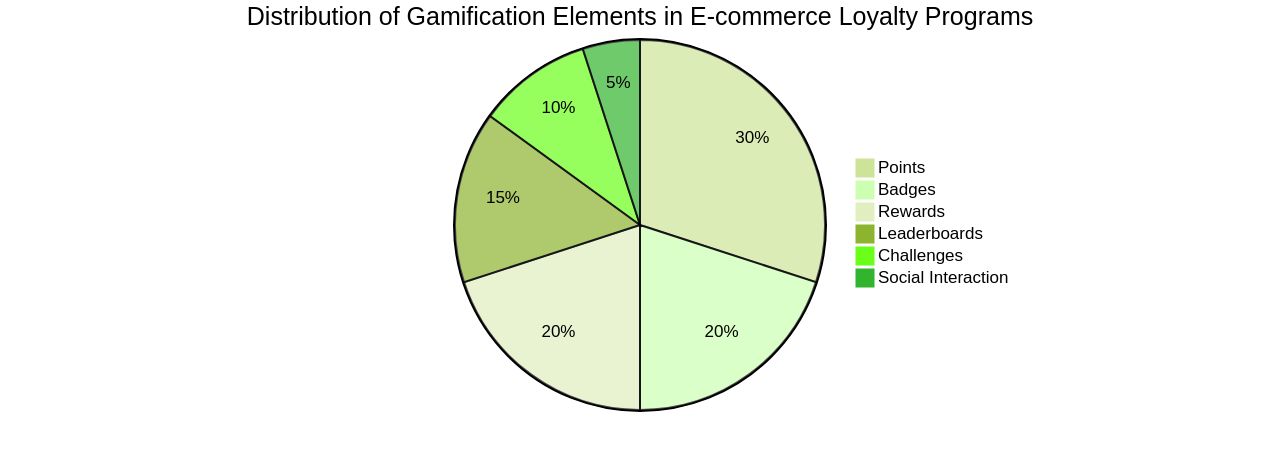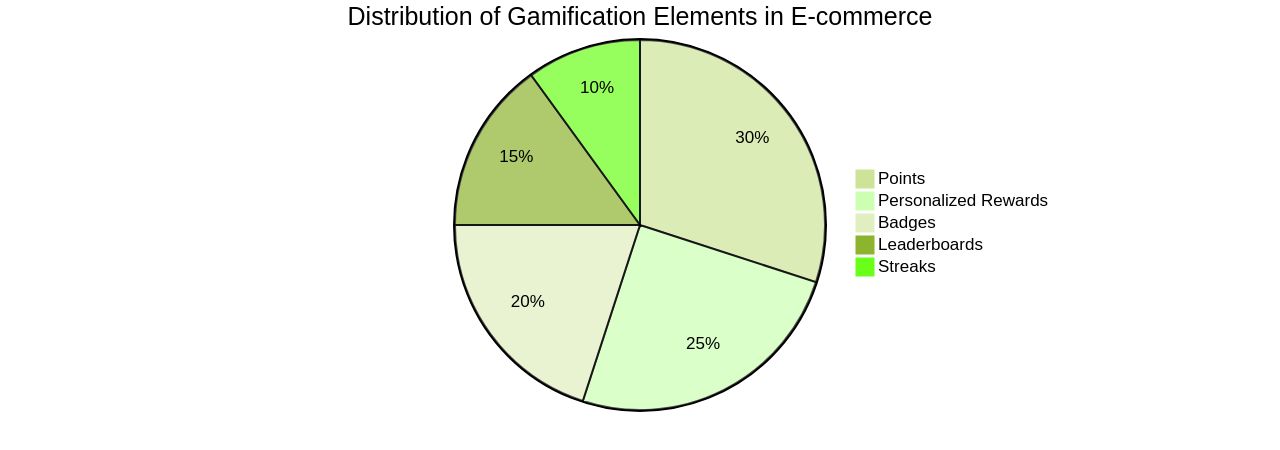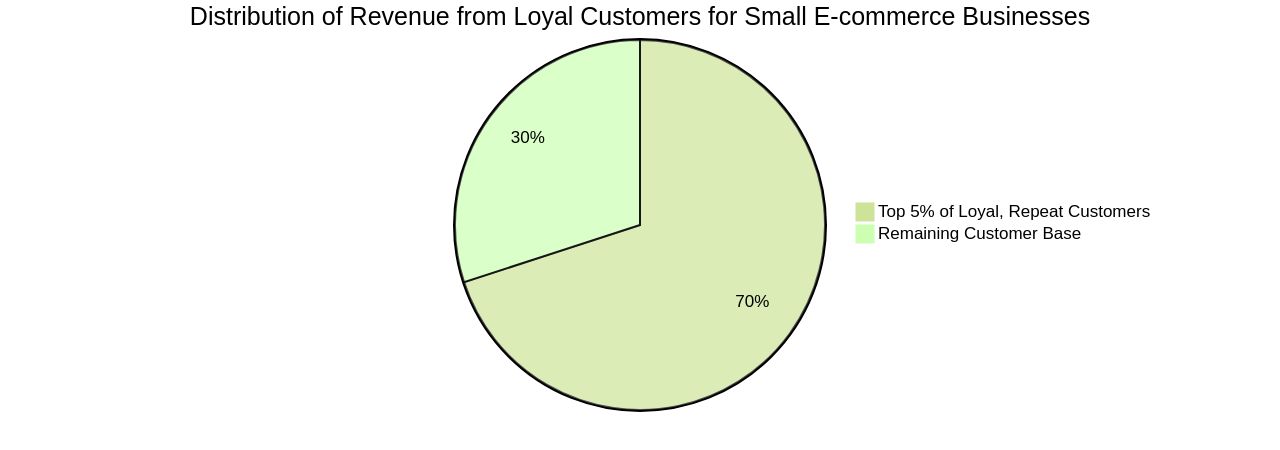Introduction
In the e-commerce landscape, gamification stands as a formidable method to boost customer engagement and nurture loyalty. It involves the use of game-inspired elements and mechanics within loyalty programs, enabling businesses to offer customers a more engaging and enjoyable interaction. Gamification aims to enhance learning, not divert from it, and it's crucial to choose game components that support and amplify your learning objectives.
One of gamification's significant advantages is immediate feedback, which plays a vital role in learning. This instant feedback enables customers to quickly understand the results of their actions, which encourages learning through experimentation. Elements such as levels, points, and badges can mirror customers' progress, offering a sense of growth and accomplishment that can be highly motivating. An example of successful gamification is Starbucks' rewards program, where customers accumulate stars for every purchase, which can be exchanged for a free drink or food item.
Moreover, gamification fosters personalized learning, stimulates competitiveness, and cultivates a sense of community. Leaderboards and challenges encourage customers to assess their performance relative to others, nurturing a healthy competitive atmosphere. This not only prompts customers to put in more effort but also encourages collaboration and social interaction. With the potential to revolutionize e-commerce by making customer engagement more accessible and effective, gamification is indeed a game-changer.
BestToolbars, a software development company, has assisted businesses in implementing gamification in e-commerce loyalty programs successfully. The positive outcomes achieved underscore the effectiveness of gamification in enhancing customer engagement and loyalty in the e-commerce sector. By incorporating gamification, businesses can boost customer participation, instill a sense of achievement and competition, encourage repeat purchases, and solidify brand loyalty. This leads to increased sales and revenue and also provides a platform for customers to interact with the brand and each other, fostering a sense of community and enriching the overall customer experience.
Understanding Gamification in E-commerce Customer Loyalty Programs
In the e-commerce landscape, gamification stands as a formidable method to boost customer engagement and nurture loyalty. It involves the use of game-inspired elements and mechanics within loyalty programs, enabling businesses to offer customers a more engaging and enjoyable interaction.
Gamification aims to enhance learning, not divert from it. It's crucial to choose game components that support and amplify your learning objectives. For instance, puzzles or challenges requiring profound contemplation can be highly effective if fostering critical thinking is a goal.
One of gamification's significant advantages is immediate feedback, which plays a vital role in learning. This instant feedback enables customers to quickly understand the results of their actions, which encourages learning through experimentation. Elements such as levels, points, and badges can mirror customers' progress, offering a sense of growth and accomplishment that can be highly motivating.
An example of successful gamification is Starbucks' rewards program where customers accumulate stars for every purchase, which can be exchanged for a free drink or food item. Special days even offer double or triple stars, enticing customers to visit the store.
Moreover, gamification fosters personalized learning, stimulates competitiveness, and cultivates a sense of community. Leaderboards and challenges encourage customers to assess their performance relative to others, nurturing a healthy competitive atmosphere. This not only prompts customers to put in more effort but also encourages collaboration and social interaction.
A recent study revealed that 66% of consumers are likely to share more personal details with brands for a reward. This data can be used for further personalizing customer experiences. However, it's vital to keep loyalty programs simple and convenient for customers. With the potential to revolutionize e-commerce by making customer engagement more accessible and effective, gamification is indeed a game-changer.
BestToolbars, a software development company, has assisted businesses in implementing gamification in e-commerce loyalty programs successfully. The positive outcomes achieved underscore the effectiveness of gamification in enhancing customer engagement and loyalty in the e-commerce sector.
By incorporating gamification, businesses can boost customer participation, instill a sense of achievement and competition, encourage repeat purchases, and solidify brand loyalty. This leads to increased sales and revenue, and also provides a platform for customers to interact with the brand and each other, fostering a sense of community and enriching the overall customer experience.
Best practices for implementing gamification in e-commerce loyalty programs include setting clear goals and objectives, creating engaging game mechanics, seamlessly integrating gamification into existing loyalty programs, and measuring the effectiveness of gamification strategies. By following these practices, businesses can maximize the impact of gamification and ensure successful implementation.
Key Elements of Gamification in E-commerce Customer Loyalty Programs
Gamification in e-commerce has become an impactful instrument to amplify customer loyalty programs. The heart of an efficient gamification strategy is the comprehension and application of its core elements - points, badges, leaderboards, challenges, rewards, and social interaction.
Consider the financial sector's innovative approach to staff training and onboarding. They employed a gamified methodology, infusing engaging themes into their courses, which significantly enhanced the induction process.
The potency of gamification extends beyond training initiatives, making a substantial difference in customer loyalty programs. It is crucial to remember that the triumph of these programs depends on delivering promised benefits and ensuring customer satisfaction.
The escalating demand in the global gamification market, fueled by the shift towards remote work and study, necessitates businesses to adapt their strategies to meet evolving consumer needs.
Loyalty programs are pivotal in conveying brand value, enriching customer experience, and understanding customers to serve them better. The integration of game design techniques such as 'Boosters' can enhance a player's inherent abilities within the game, creating an immersive user experience.
The role of social interaction in gamification is paramount. Incorporating multiplayer features and social elements can foster communication, collaboration, and a community spirit among users.
The emerging trends in loyalty programs suggest a movement towards more experiential and personalized offerings. Strategic alliances are vital in this evolution, enabling businesses to attract new customers and discover new revenue channels.
The growing popularity of gamification offers businesses the opportunity to engage customers, increase sales, and cultivate deeper customer connections. The secret to success lies in creating value that transcends financial benefits and nurtures a sense of community among users.
In the realm of e-commerce loyalty programs, points play a significant role in fostering customer engagement and loyalty. They incentivize desired behaviors, motivating customers to participate in loyalty programs. The psychology of points and the various ways they can be earned are vital for businesses to understand and leverage to cultivate customer loyalty.

Leaderboards are valuable in driving competition and engagement. Businesses can utilize various leaderboard formats to foster a sense of friendly rivalry among customers, leading to elevated levels of engagement and loyalty.
Challenges and rewards are instrumental in boosting customer engagement and loyalty. They motivate customers to actively participate in programs by creating a sense of achievement. By understanding the needs and preferences of their customers, businesses can design challenges and rewards that resonate with them. Businesses can further enhance customer engagement by making challenges more enjoyable and interactive using gamification techniques. The strategic use of challenges and rewards can significantly increase customer engagement and loyalty.
Innovative Gamification Examples in E-commerce Customer Loyalty Programs
Gamification stands as a powerful tool for bolstering customer engagement and loyalty in e-commerce. Incorporating gaming elements such as points, badges, leaderboards, and streaks into everyday tasks, businesses can create a delightful and rewarding customer experience.

This approach taps into the innate human inclination towards competition, achievement, and recognition, fostering brand loyalty and driving conversions.
Consider Samsung Nation, a prime example of a company that rewards users with badges as they ascend through different achievement tiers. Users earn these badges and levels by engaging in various activities like content creation, watching videos, reviewing products, and community interaction. This model is not exclusive to large enterprises; small businesses can also leverage it since users are interacting with the same technology.
Education is another vital component of gamification. Apps like NOOM, MyFitnessPal, and Headspace regularly disseminate articles educating users on healthy lifestyles and the benefits of meditation.
Furthermore, loyalty programs play a significant role in enhancing the customer experience. While monetary rewards like discounts, coupons, and freebies are common, customers are increasingly seeking more personalized, community-based benefits. Businesses should, therefore, contemplate a wide array of potential benefits and rewards when designing their programs.
BestToolbars offers insights into introducing personalized rewards, interactive quizzes, and competition-based challenges into gamification strategies. The company has successfully assisted businesses in implementing personalized rewards systems, leveraging customer data to create customized experiences that drive higher engagement and loyalty levels. They also provide guidance on designing and executing effective challenges, fostering friendly competition among customers to motivate active participation.
Moreover, BestToolbars highlights the need for key gamification metrics such as customer engagement, loyalty program participation, repeat purchases, and customer satisfaction to evaluate the success of e-commerce loyalty programs. They offer services to track and analyze these metrics, helping businesses optimize their strategies and improve their loyalty programs.
These examples should inspire you to think creatively and implement gamification strategies that resonate with your target audience, ultimately driving customer loyalty and boosting sales.
Benefits of Gamification in E-commerce Customer Loyalty Programs
The transformative power of gamification in e-commerce loyalty programs is undeniable. By enhancing customer engagement, strengthening customer retention, and fostering brand loyalty, it ultimately boosts customer lifetime value. The integration of game elements, such as those offered by BestToolbars like points, badges, and challenges, can create a memorable and rewarding customer experience that propels business growth in the e-commerce sphere.
Interestingly, gamification appeals to human emotions like curiosity, satisfaction, and achievement, thereby enhancing brand engagement. This emotional appeal isn't age-restricted, as adults, much like children, respond positively to enjoyable learning experiences.
Evidence of the effectiveness of gamification is seen in the statistics: small e-commerce businesses derive 35% of their revenue from the top 5% of loyal, repeat customers.

Also, a positive customer experience can encourage 60% of U.S. customers to do more business with a company. However, businesses should tread carefully, as 72% of customers switch to a competitor after just one bad experience.
Gamification can address this challenge by making the customer journey more interactive and enjoyable. Case studies of businesses that have successfully implemented gamification strategies with BestToolbars support this claim.
Designing a gamified loyalty program requires setting clear goals, designing engaging game mechanics, seamlessly integrating gamification into existing loyalty programs, and measuring the effectiveness of the strategies.
In conclusion, the integration of gamification into loyalty programs is not just a passing trend; it's a strategic move that can deliver significant results, especially when it comes to improving customer retention and increasing customer lifetime value.
Best Practices for Implementing Gamification in E-commerce Customer Loyalty Programs
Implementing gamification into e-commerce loyalty programs requires strategic planning and meticulous execution. Start with setting clear goals, such as driving more website traffic, reducing the time it takes for customers to convert, or lessening the duration of the onboarding process. It's important to understand your target audience's behavior and motivations, as gamification can create high expectations. If these are not met, it could result in unfulfilled incentives.
When designing your gamified experience, ensure it's user-friendly and intuitive. The game rules should be clear, with each game promoting a specific action and corresponding result. Customers should understand the game rules, how to accumulate points, and what the rewards entail.
The rewards should be meaningful and relevant to the customer. The incentive to participate should extend beyond monetary rewards, particularly for younger generations. Gamification also allows businesses to leverage first-party customer data in more complex ways, boosting customer engagement and loyalty.
Finally, it's crucial to consistently refine and optimize your gamification strategy. Ensure that gamification works alongside existing systems and doesn't replace them. Use analytics tools to monitor performance and measure engagement across various platforms. Be aware of potential pitfalls and make necessary adjustments to maximize the effect of gamification on your e-commerce customer loyalty programs.
In this process, a company like BestToolbars could be a valuable partner. They offer software development, design, and engineering services, including consulting and market testing. Their team of experts can work in collaboration with your existing teams or provide full outsourcing services, helping you tailor your gamification strategies to effectively engage and motivate your specific customer base.
Conclusion
In conclusion, gamification in e-commerce customer loyalty programs is a powerful tool to boost customer engagement and nurture loyalty. By incorporating game-inspired elements and mechanics, businesses can create a more engaging and enjoyable interaction with their customers. Gamification provides immediate feedback, allowing customers to quickly understand the results of their actions and encouraging learning through experimentation. Elements like levels, points, and badges offer a sense of growth and accomplishment, motivating customers to actively participate in loyalty programs. Successful examples like Starbucks' rewards program demonstrate the effectiveness of gamification in enhancing customer engagement and loyalty.
Furthermore, gamification fosters personalized learning, stimulates competitiveness, and cultivates a sense of community. Leaderboards and challenges encourage customers to assess their performance relative to others, creating a healthy competitive atmosphere. This not only prompts customers to put in more effort but also encourages collaboration and social interaction. The potential of gamification to revolutionize e-commerce by making customer engagement more accessible and effective cannot be underestimated.
To harness the benefits of gamification in e-commerce customer loyalty programs, businesses should consider best practices such as setting clear goals, designing engaging game mechanics, seamlessly integrating gamification into existing loyalty programs, and measuring the effectiveness of strategies. It's important to create value that goes beyond financial benefits and nurtures a sense of community among users. By implementing these practices, businesses can maximize the impact of gamification on customer engagement and loyalty.
To start leveraging the power of gamification in your e-commerce customer loyalty programs today, start now.





